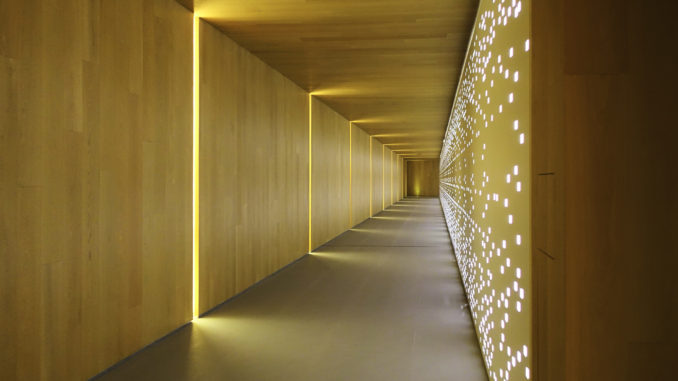
By Vijay Gollapudi, vice president of software development, Quore
Over the past decade, the hospitality industry has undergone a significant transformation. The emergence and popularization of cloud-based property management solutions has forever changed how hoteliers do business.
Welcome to the Cloud
Compared to other industries, hoteliers were not the earliest adopters of cloud-based technology. For those of us in the hospitality business, resistance to change comes as no surprise. A hotel’s property management system (PMS) serves as the hub for all operations and adopting a new system—in this case a cloud-based one—can seem overwhelming to say the least.
But in recent years a wave of technological advancements has overtaken the hotel industry. According to the 2018 Lodging Technology Study published by Hospitality Technology magazine, 61 percent of hotels plan to increase spending on technology in 2018. Finally, the confluence of disruptive technology and a new generation of hoteliers has paved the way for the transition away from traditional on-premise hotel management systems to leaner, more adaptable, cost-effective cloud-based (also called web-native) systems.
A Better Way to Do Business
Over time, the benefits of a cloud-based PMS simply became undeniable. For example, the majority of on-premise systems used in the hospitality industry are very property specific, so if a manager needs to share data across multiple properties, it must be done manually, which amounts to a punitively labor-intensive endeavor. Conversely, cloud-based systems eliminate the task of manual sharing. With the ability to track activity at any time, hoteliers have instant access to key data needed to assess the efficiency of their hotel’s various operations, including housekeeping, maintenance, guest relations and more. Furthermore, management and ownership groups can manage and track their entire portfolio or just one property, even from thousands of miles away. Access can be easily filtered by region or area of responsibility.
Further lightening the workload, cloud-based solutions don’t require loading or maintaining data at a property. The only hardware necessary are the mobile devices used by staff members. This makes onboarding employees easy and communication seamless. Whether it’s replacing a static binder at the front desk with an active electronic log book, noisy radios with efficient app-driven mobile devices, or sticky notes with intelligent push notifications, a good cloud-based solution – whether a service optimization tool or guest communication tool – ensures everyone at the hotel is on the same page at the same time.
Unlike a bulky on-site PMS, a cloud-based system is flexible, sustainable and easily deployable and scalable (even globally) to all hoteliers, big or small. A report by Grant Thornton titled Emerging clouds in hotel technology claims, “the simplicity, remote access and affordability are key advantages for the small hotelier, whereas the ease of multi-site management, rapidity of deployment and scalability are a major advantage for larger hotel chains.” Operations become streamlined and efficient, which drives down costs and increases reliability. And that’s just the advantages on the back-end of operations.
On the customer-facing side, the guest experience is enhanced beyond recognition. Guest requests are communicated automatically to the appropriate department or individual to decrease response time and increase guest satisfaction. In the event of a guest complaint, key managers are immediately notified so the entire team can pitch in to quickly resolve the issue. This level of responsiveness and ability to trend recurring issues could never be achieved the old-fashioned way.
Customizing the Cloud through Microservices
Cloud-based technology has revolutionized the hotel industry, but as a software developer, it’s my job to always look ahead to the next opportunity for disruptive technology. That opportunity comes in the form of microservices.
As defined by an IMB cloud advisor, “Microservices are an architectural approach to creating cloud applications, where each application is built as a set of services. Each service runs in its own processes and communicates through application programming interfaces (API).”
This type of building-block architecture provides an alternative to the more common monolithic cloud-based systems, which are built as a single unit. The progression from the monolithic architecture to an integrated system of microservices presents a technological leap comparable to the transition from on-premise to cloud-based systems. In other words, the microservice architecture further enhances all of the beneficial aspects of a cloud-based hotel management system.
With microservice applications there is no limit to customization. Each application is independently scalable, upgradable and deployable, thus enabling hoteliers to create their own specially designed suite of services, mixing and matching services that work best for their hotels. After all, not every hotel operates in the same way, so customization allows for strategic variation based on each hotel’s individual needs and size. This is especially useful for international chains that require a multilingual platform.
By eliminating a one-size-fits-all approach to cloud-based management systems, hoteliers can have a system that’s perfectly fitted, with zero superfluous features, at a lower cost. What’s not to like?
Vijay Gollapudi is vice president of software development at Quore, the hospitality industry’s leading innovator of hotel management software.
Are you an industry thought leader with a point of view on hotel technology that you would like to share with our readers? If so, we invite you to review our editorial guidelines and submit your article for publishing consideration.
